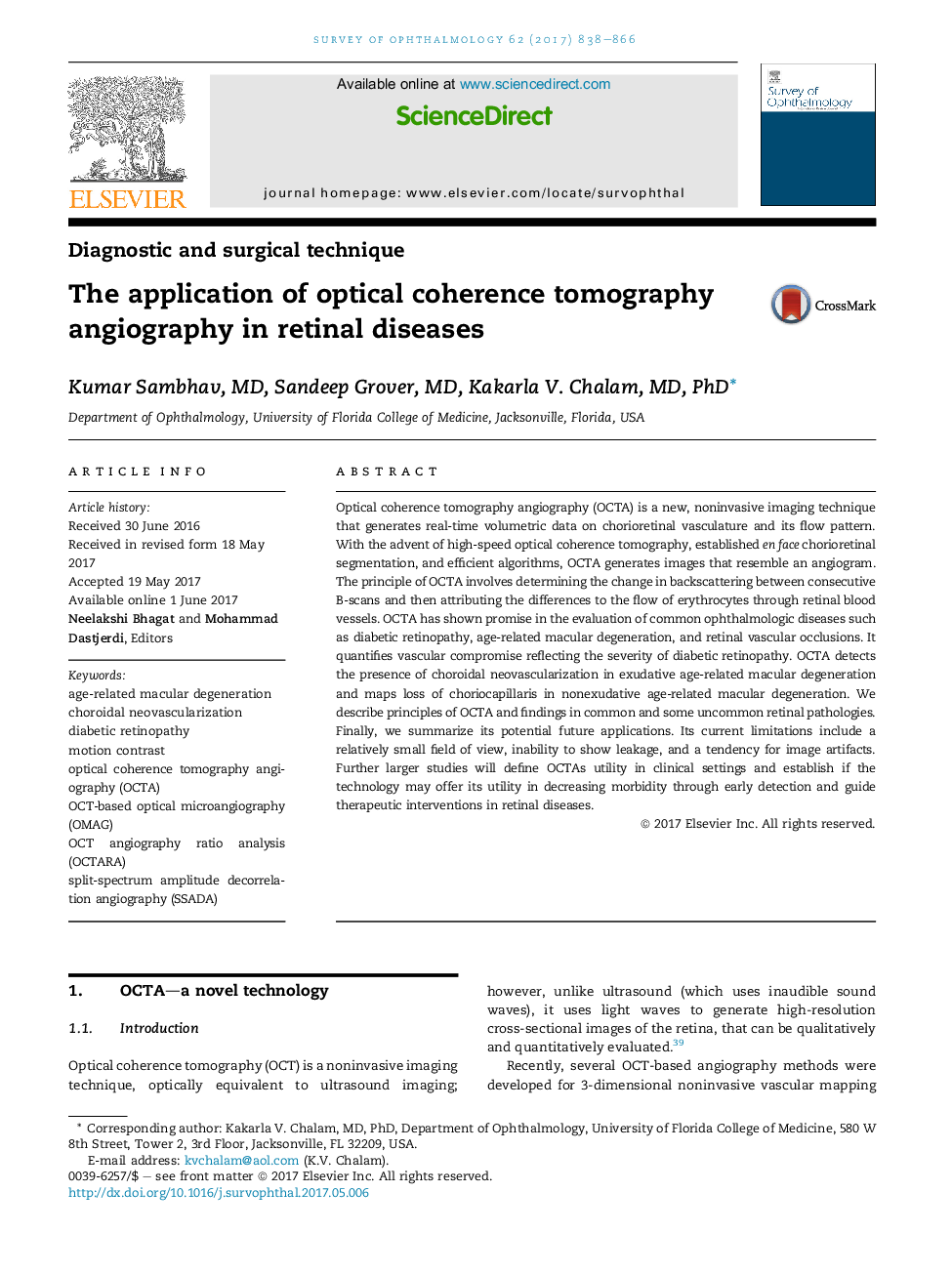| Article ID | Journal | Published Year | Pages | File Type |
|---|---|---|---|---|
| 5705723 | Survey of Ophthalmology | 2017 | 29 Pages |
Abstract
Optical coherence tomography angiography (OCTA) is a new, noninvasive imaging technique that generates real-time volumetric data on chorioretinal vasculature and its flow pattern. With the advent of high-speed optical coherence tomography, established en face chorioretinal segmentation, and efficient algorithms, OCTA generates images that resemble an angiogram. The principle of OCTA involves determining the change in backscattering between consecutive B-scans and then attributing the differences to the flow of erythrocytes through retinal blood vessels. OCTA has shown promise in the evaluation of common ophthalmologic diseases such as diabetic retinopathy, age-related macular degeneration, and retinal vascular occlusions. It quantifies vascular compromise reflecting the severity of diabetic retinopathy. OCTA detects the presence of choroidal neovascularization in exudative age-related macular degeneration and maps loss of choriocapillaris in nonexudative age-related macular degeneration. We describe principles of OCTA and findings in common and some uncommon retinal pathologies. Finally, we summarize its potential future applications. Its current limitations include a relatively small field of view, inability to show leakage, and a tendency for image artifacts. Further larger studies will define OCTAs utility in clinical settings and establish if the technology may offer its utility in decreasing morbidity through early detection and guide therapeutic interventions in retinal diseases.
Keywords
Related Topics
Health Sciences
Medicine and Dentistry
Ophthalmology
Authors
Kumar MD, Sandeep MD, Kakarla V. MD, PhD,
